
How to Use Adafruit 8x16 LED Matrix FeatherWing - Yellow-Green: Examples, Pinouts, and Specs
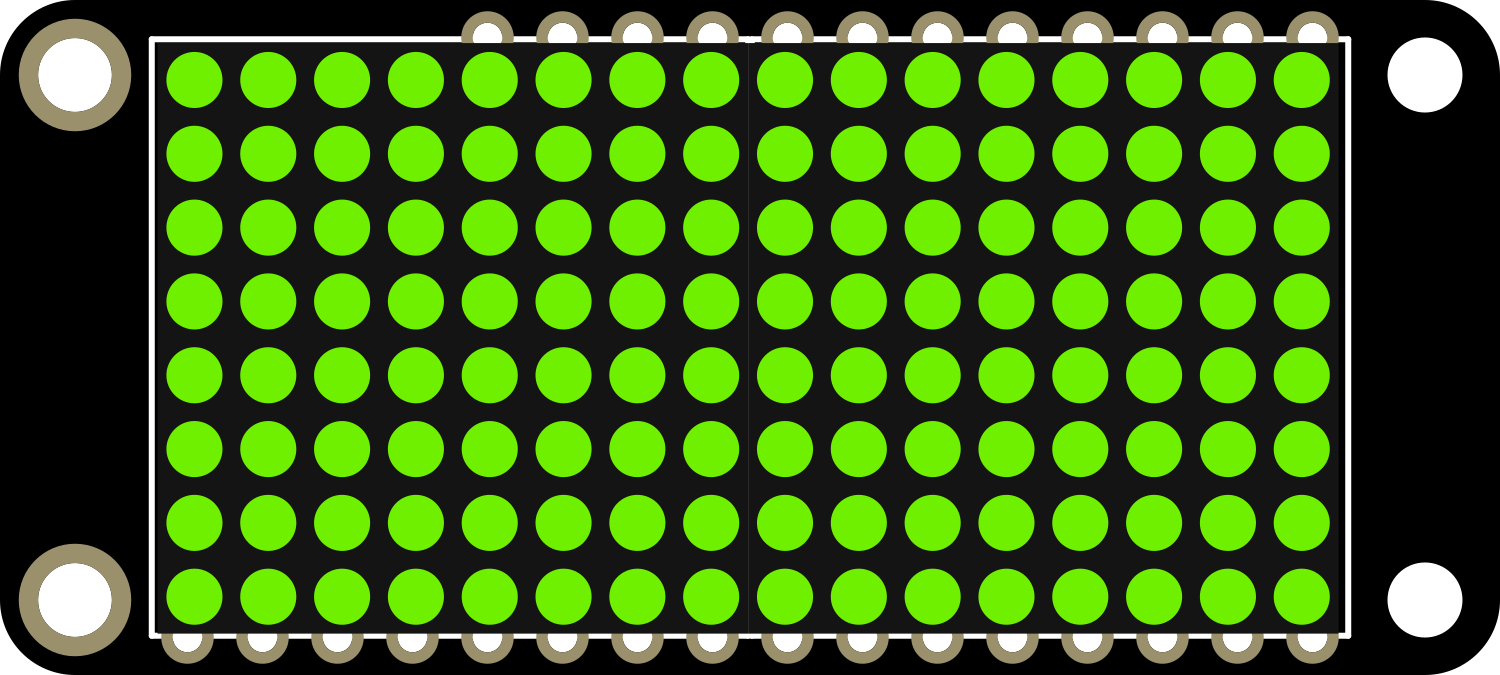
 Design with Adafruit 8x16 LED Matrix FeatherWing - Yellow-Green in Cirkit Designer
Design with Adafruit 8x16 LED Matrix FeatherWing - Yellow-Green in Cirkit DesignerIntroduction
The Adafruit 8x16 LED Matrix FeatherWing in Yellow-Green is a compact and versatile display module designed for use with the Adafruit Feather series of development boards. This LED matrix provides a grid of 8x16 yellow-green LEDs, allowing for the creation of eye-catching displays including scrolling text, animations, and simple graphics. It is an ideal choice for wearable projects, portable instruments, and any application where a small yet readable display is required.
Explore Projects Built with Adafruit 8x16 LED Matrix FeatherWing - Yellow-Green
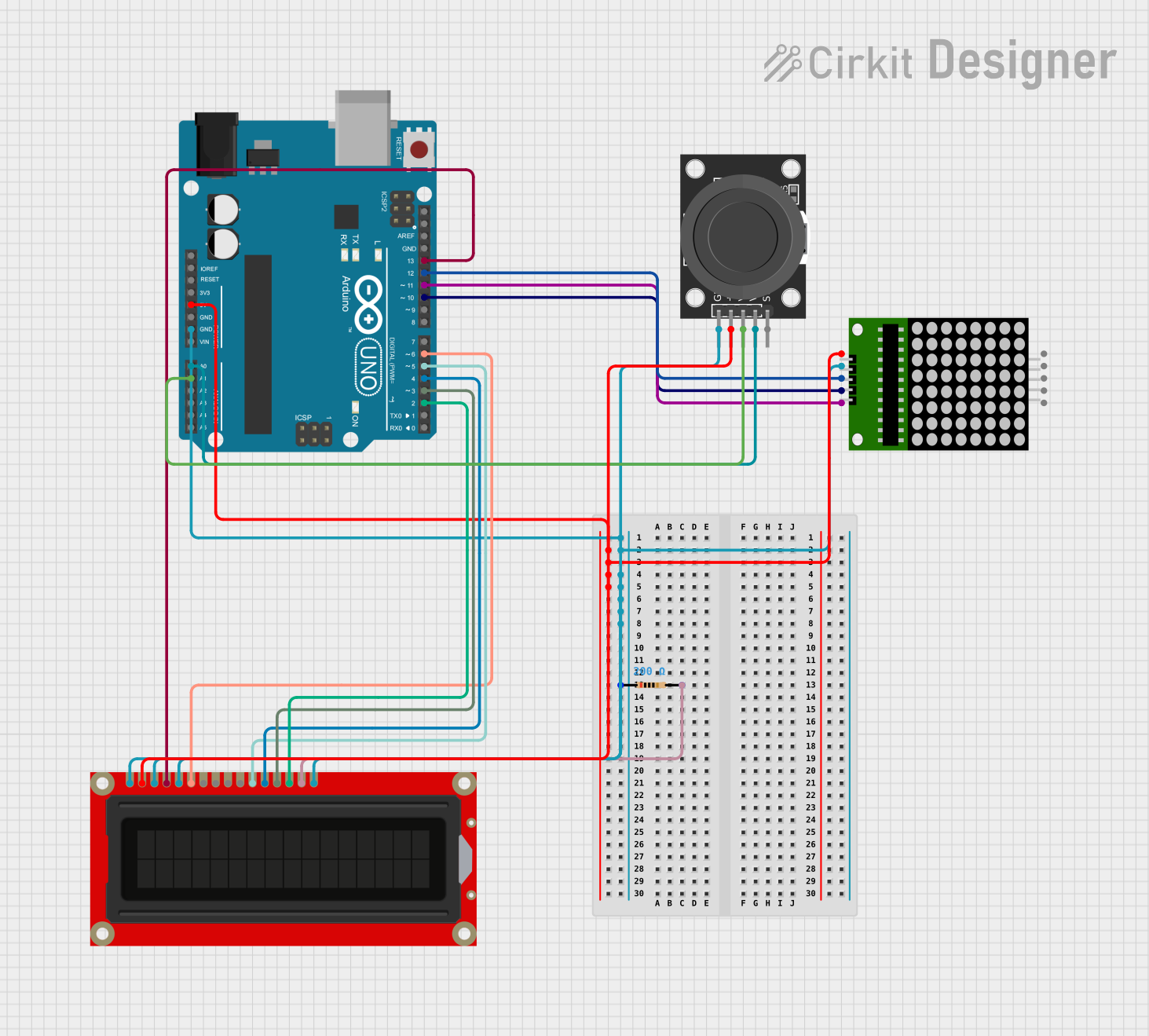
 Open Project in Cirkit Designer
Open Project in Cirkit Designer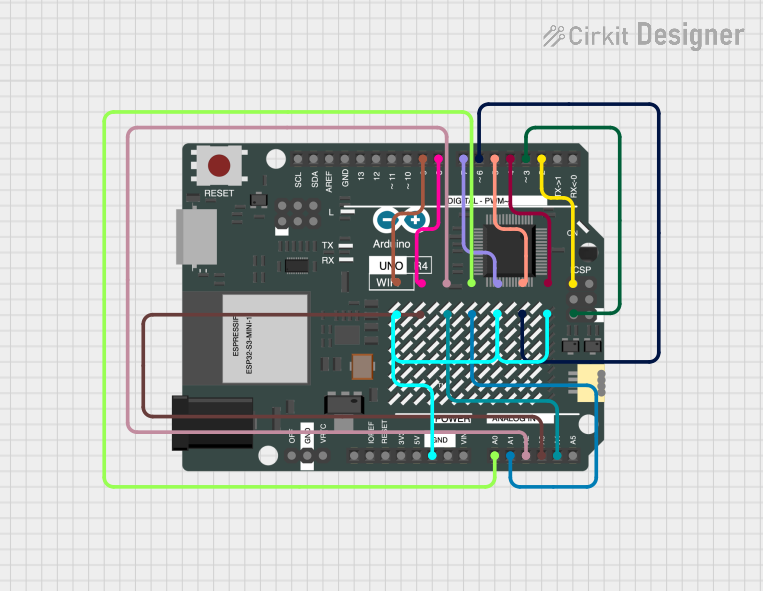
 Open Project in Cirkit Designer
Open Project in Cirkit Designer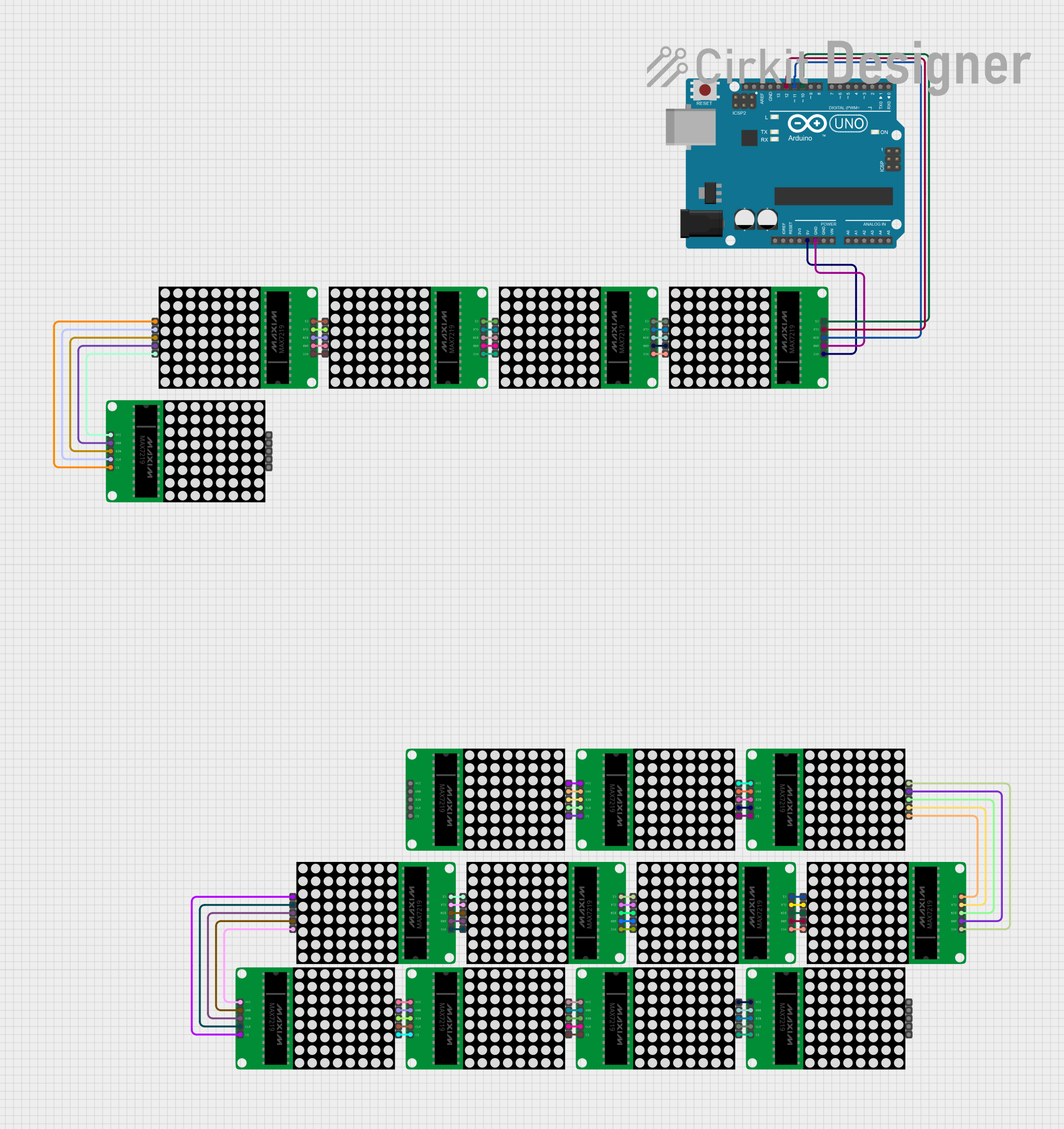
 Open Project in Cirkit Designer
Open Project in Cirkit Designer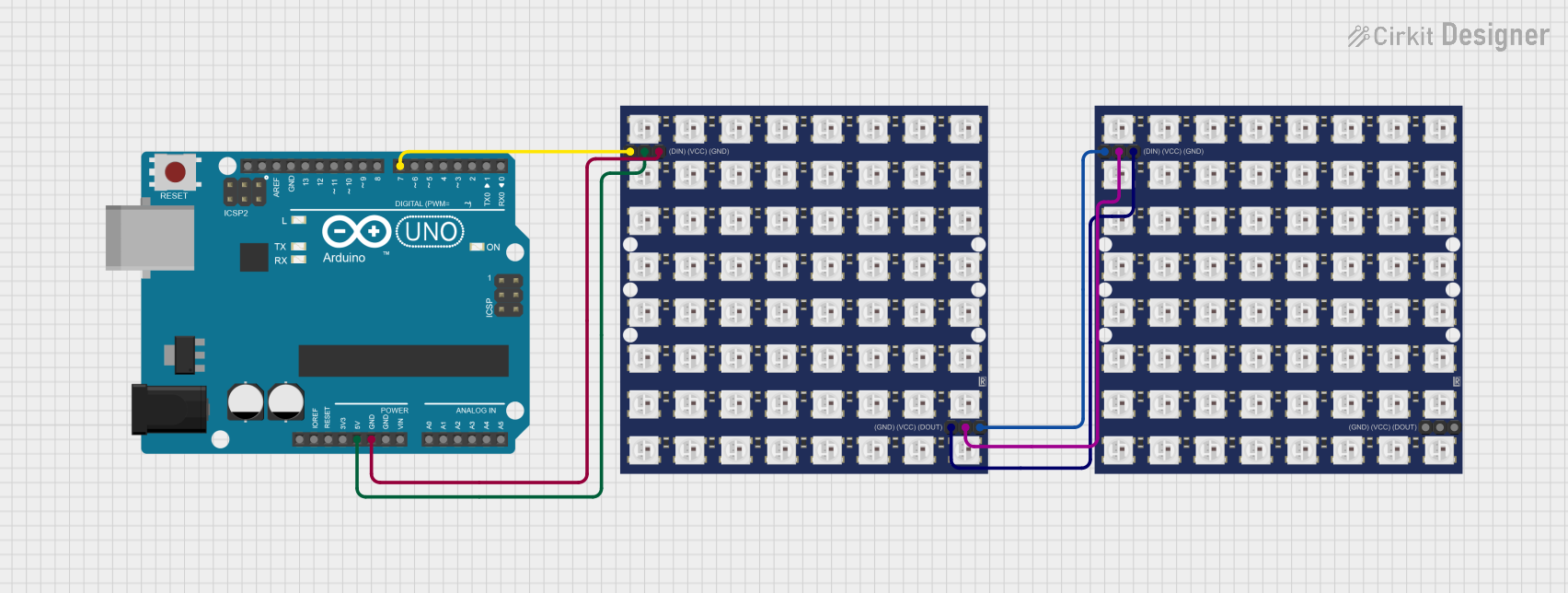
 Open Project in Cirkit Designer
Open Project in Cirkit DesignerExplore Projects Built with Adafruit 8x16 LED Matrix FeatherWing - Yellow-Green

 Open Project in Cirkit Designer
Open Project in Cirkit Designer
 Open Project in Cirkit Designer
Open Project in Cirkit Designer
 Open Project in Cirkit Designer
Open Project in Cirkit Designer
 Open Project in Cirkit Designer
Open Project in Cirkit DesignerCommon Applications and Use Cases
- Wearable electronics
- Portable instruments
- Data visualization
- User interfaces for small devices
- Educational projects and DIY games
- Scrolling text displays for messages or notifications
Technical Specifications
Key Technical Details
- Dimensions: 51mm x 23mm x 5mm
- Weight: 4.8 grams
- LED Color: Yellow-Green
- Matrix Size: 8x16 LEDs
- Interface: I2C
- Operating Voltage: 3.3V to 5V DC
- Max Current Draw: 400mA at 5V
Pin Configuration and Descriptions
| Pin | Function | Description |
|---|---|---|
| GND | Ground | Connect to system ground |
| VCC | Power | 3.3V to 5V power supply |
| SDA | Data | I2C data line |
| SCL | Clock | I2C clock line |
| RST | Reset | Optional reset pin (not required for basic operation) |
Usage Instructions
How to Use the Component in a Circuit
- Power Connections: Connect the VCC pin to a 3.3V or 5V power supply, and the GND pin to the ground of your power supply.
- Data Connections: Connect the SDA and SCL pins to the corresponding I2C data and clock lines on your Feather board.
- Software Setup: Install the necessary libraries and drivers to interface with the LED matrix from your Feather board.
- Programming: Write or modify code to control the LED matrix, using the provided libraries to simplify the process.
Important Considerations and Best Practices
- Ensure that the power supply is within the specified voltage range to prevent damage.
- The I2C address of the LED matrix can be changed if necessary to avoid conflicts with other I2C devices.
- When designing a custom PCB or using a breadboard, make sure to provide adequate power decoupling using capacitors.
- Avoid exposing the LED matrix to mechanical stress or excessive heat.
Troubleshooting and FAQs
Common Issues Users Might Face
- LEDs Not Lighting Up: Check the power connections and ensure that the I2C data and clock lines are properly connected.
- Dim or Flickering LEDs: Ensure that the power supply can provide sufficient current and that the voltage is stable.
- Garbled Display: Verify that the I2C address is correctly set and that there are no conflicts with other devices on the I2C bus.
Solutions and Tips for Troubleshooting
- Double-check wiring and solder joints for any loose connections or shorts.
- Use a multimeter to verify that the correct voltage is reaching the LED matrix.
- Consult the Adafruit forums or support channels for assistance if the issue persists.
Example Code for Arduino UNO
#include <Wire.h>
#include <Adafruit_GFX.h>
#include <Adafruit_LEDBackpack.h>
Adafruit_8x16matrix matrix = Adafruit_8x16matrix();
void setup() {
matrix.begin(0x70); // Initialize the LED matrix with its I2C address
matrix.setBrightness(15); // Set brightness to a medium level (0-15)
}
void loop() {
matrix.clear(); // Clear the matrix display
matrix.setCursor(0, 0); // Set cursor at top-left corner
matrix.print(F("Hello")); // Print "Hello" at the current cursor position
matrix.writeDisplay(); // Update the matrix display with new data
delay(500); // Wait for half a second
matrix.scrollDisplayLeft(); // Scroll the display left
matrix.writeDisplay(); // Update the display after scrolling
delay(500); // Wait for half a second
}
Note: This example assumes that the Adafruit LED Backpack library is installed and that the I2C address of the LED matrix is set to the default (0x70). Adjust the I2C address in the code if it has been changed.
Remember to keep code comments concise and within the 80 character line length limit.